NEW YORK— For Sky News’ Ireland Correspondent David Blevins, balanced, accurate and positive stories in journalism were paramount in resolving Northern Ireland’s deep tumultuous past.
Opening his talk “Making Hope and History Rhyme: Reporting the Northern Ireland Peace Process” at The King’s College with lesser-known facts of the region – like Ireland and St. Patrick’s official color being green, not blue – Blevins traced the progression of peace in this prominent conflict area along the lines of ‘history, hope and rhyme.’
His inspiration? Well-known Irishman Seamus Heaney’s poem: “History says, Don’t hope; On this side of the grave; But then, once in a lifetime; The longed-for tidal wave; Of justice can rise up; And hope and history rhyme.”
Much of Northern Ireland’s history and political turmoil started in pre-20th century with religious undertones, and continued with a series of violent uprisings until the 1990s.
A journalist for 25 years, Blevins grew up amidst civil wars and also ended up reporting on the Shankill bombing, the Omagh bombing and the brokering of the groundbreaking Good Friday Agreement.
Continuing with ‘hope’, Blevins listed a few key individuals who worked to bring about peace in Northern Ireland: John Hume, a prominent civil rights figure; David Trimble, a pro-British Union leader who shared power with Irish Republicans; Gerry Adams, leader of political party Sinn Féin; and Tony Blair, former British Prime Minister.
Delving into the ‘rhyme’ portion of his speech, Blevins says the media’s contribution was “three-fold.”
First, journalists ensured “every voice was heard.” Blevins recounted how Prime Minister Margaret Thatcher banned Gerry Adams from broadcast but the media worked around it by hiring an actor to voice him.
Second, the media focused on accuracy while navigating differing opinions and solutions. Lastly, they tried to highlight good news.
Blevins also shared what he believed to be his own ‘hope, history and rhyme’. He left journalism for a while to peruse a degree in Theology. However, soon he was called back into the world of media where he worked part-time in news and part-time in ministry.
It was then, he said, that the two melded together and everything finally clicked.
“God wasn’t calling me to the ordained ministry,” he said. “He was calling me to live out my faith in the media – to gather the news ethnically and to report it with integrity. “
He continued to expand upon the idea of media and religion in Ireland. According to Blevins, Christianity and journalism simply don’t go together there. Nevertheless, he expressed the need for journalists in Ireland to understand religion.
Blevins stated that “… Ireland needs reporters who get religion, reporters who understand that others come with a different worldview and reporters who let their journalism do the talking.”
“It’s never been so important in Ireland, now that stories about marriage, abortion, euthanasia–and not sectarian conflict–are topping our news agenda too,” he said.
Anthony Bradley, associate professor of religious studies at The King’s College and a research fellow at the Acton Institute, who attended the lecture said: “This was the best lecture on the challenges in Northern Ireland after The Troubles that I’ve ever heard.”
“I hope that students walk away inspired to report stories about difficult and challenging social contexts as men and women empowered to present what is true in ways that inspire, provoke, and catalyze hope and change,” Bradley stated. “Blevins models this in his work.”
Watch Belvins’ full talk here:

